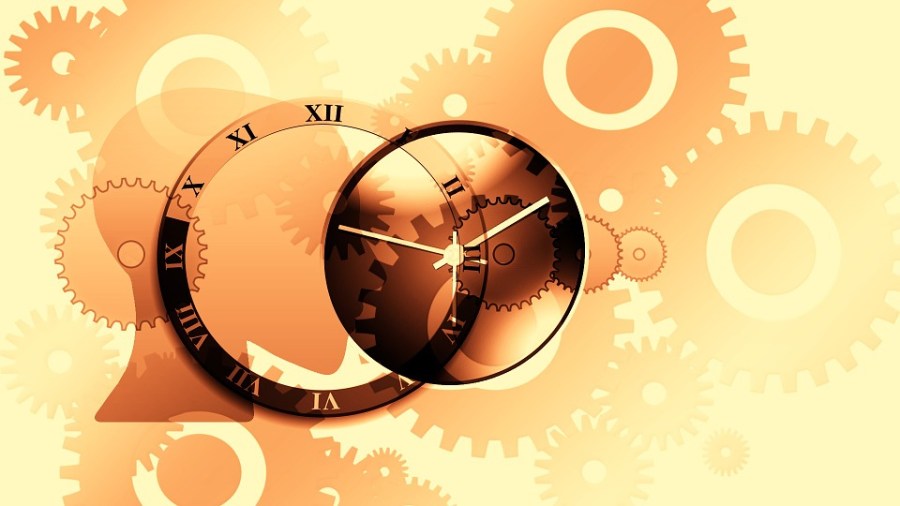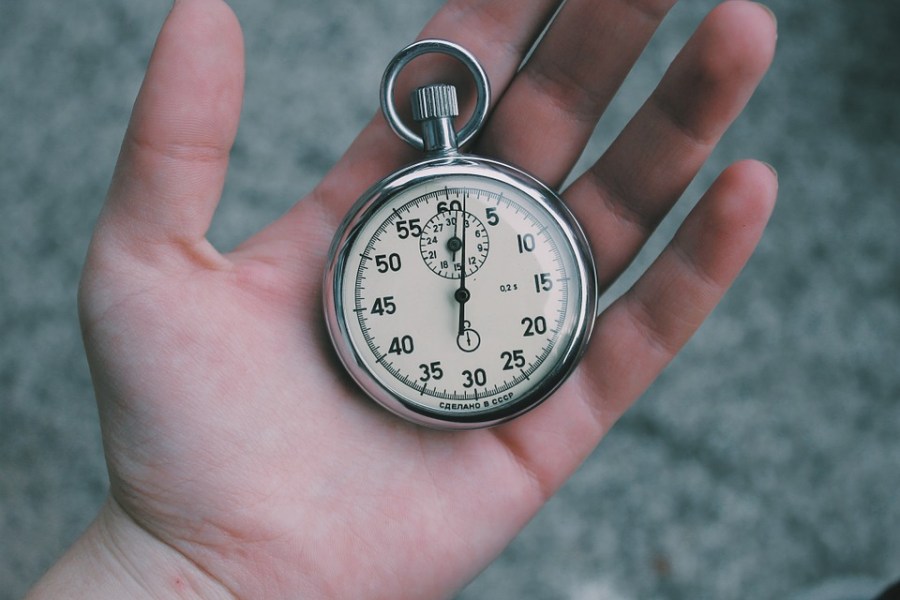How To Draw A Digital Clock

For thousands of years, humans accept used devices to measure out and keep track of time. The electric current system of time measurement dates back to approximately 2000 BC and the ancient Sumerians. These ancestors sometimes used quite a flake of ingenuity to keep rails of the passing twenty-four hour period. These days it's very like shooting fish in a barrel to go along rails of fourth dimension on numerous devices, from cell phones to tablets and iPads. Check out 15 of the near interesting types of clocks.
Mechanical Clock
A mechanical clock is fabricated from simple mechanical components that aren't electrical. Usually powered by a coiled jump or falling weights, common mechanical clock examples include grandmother, granddad and cuckoo clocks. The accuracy of the clock depends on its construction and the engineering of its components.
Pendulum Clock
A pendulum clock uses a pendulum for time dividing. This improves the clock's accuracy because the swinging has a special property. The length of the pendulum determines the time for the pendulum to swing back and forth. The pendulum's weight and arc don't affect the swinging, resulting in consistent time dividing.
Alarm Clock
An alert clock is designed to alert an individual or group at a specified fourth dimension. The master role of these clocks is to wake people up in the morning or after naps, but they can be used for other reminders too. Most use sound, although some alarm clocks use light or vibrations. Nearly alarm clocks stop automatically afterwards a certain time, or you can manually printing a button or handle to stop the alarm.
Atomic Clock
Atomic clocks are calibrated against the frequency of a resonating atom, ordinarily cesium. As a result, they are highly accurate. The NIST-FI diminutive clock at the National Institute of Standards and Engineering in Boulder, Colorado, is accurate to less than a 2nd in more than 60 million years. Because these clocks are expensive scientific tools, they are used mostly in laboratories.
Stopwatch Clock
Stopwatches are used to accurately time events. In fact, they don't record the time of solar day or dark; they simply record how long information technology takes to perform certain functions. Indispensable in races and sporting events, some stopwatches tin time multiple events. Some can even track parts of an issue in addition to the total event time.

Hourglass
An hourglass measures time by allowing sand or another substance to menstruum between two glass bulbs continued vertically by a narrow cervix. This construction allows a regulated trickle from the upper bulb to driblet to the lower one. Factors that bear on the time interval include sand coarseness, sand quantity, neck width and bulb size. Hourglasses may be reused indefinitely by inverting the bulbs once the upper bulb is empty.
Globe Clock
A globe clock is a clock that displays the time for various cities around the world simultaneously. Information technology can come in various forms, such equally multiple circular analogue clocks with moving hands or multiple digital clocks that characteristic numeric readouts. Some world clocks feature a flick map of the world embedded with digital or analog displays.
Quartz Clock
Quartz clocks utilise an electronic quartz crystal oscillator and a frequency divider or counter. This crystal vibrates when electricity passes through it, and the vibration is very consistent, resulting in a very reliable mechanism for time keeping. The quartz crystal and electric circuits are referred to as the quartz oscillator, while the crystal's oscillation is known as the piezoelectric effect.
Candle Clock
Used in ancient times, a candle clock is a sparse candle with consistently spaced markings. When burned, the passage of time is indicated by the level of the markings. These clocks provided an effective fashion to tell time at dark, indoors and on cloudy days.
Sundial (Sun Clock)
The sundial measures the fourth dimension of day using the direction of shadows bandage by the dominicus. As the sun moves from east to west, the shadows formed tell the time. The Egyptians were the offset to use sundials, and a well-designed sundial can still measure out local solar time with reasonable accuracy today. Still, it requires the dominicus to shine and doesn't work at all at nighttime.
Torsion Pendulum Clock
This blazon of mechanical clock keeps time with a mechanism called a torsion pendulum. It consists of a weighted disk or wheel suspended by a thin wire or ribbon, called a torsion or break spring . The torsion pendulum rotates effectually the vertical axis of the wire, twisting it, instead of swinging like a regular pendulum. The strength created by the twisting torsion spring reverses the management of rotation. This allows the torsion pendulum to oscillate slowly, clockwise and counterclockwise.
Astronomical Clock
An astronomical clock is a clock that features special mechanisms and dials to brandish astronomical information. It shows events such as the relative positions of the moon, sun, zodiac constellations and sometimes major planets.
Pocket Spotter
A pocket watch is fabricated to be carried in a pocket. Consequently, these watches were the near mutual blazon from the time they were adult in the 16th century until the advent of wristwatches later on Earth War I. These watches more often than not take an fastened chain that allows them to be secured to a lapel, waist coat or belt loop to prevent them from beingness dropped.
Digital Clock
Digital clocks display a numeric representation of fourth dimension. Two numeric display formats are ordinarily used on digital clocks. These clocks generally utilize a LED or LCD display in either 12- or 24-hour notations.
Analog Clock
Analog clocks usually indicate time using the angles of the clock hands. The most commonly used clock face up uses a stock-still numbered dial and moving hands. The clock commonly has a circular scale of 12 hours, which also serves as a scale of hr.
Source: https://www.questionsanswered.net/article/15-different-types-of-clocks?utm_content=params%3Ao%3D740012%26ad%3DdirN%26qo%3DserpIndex
Posted by: billupsthavite.blogspot.com


0 Response to "How To Draw A Digital Clock"
Post a Comment